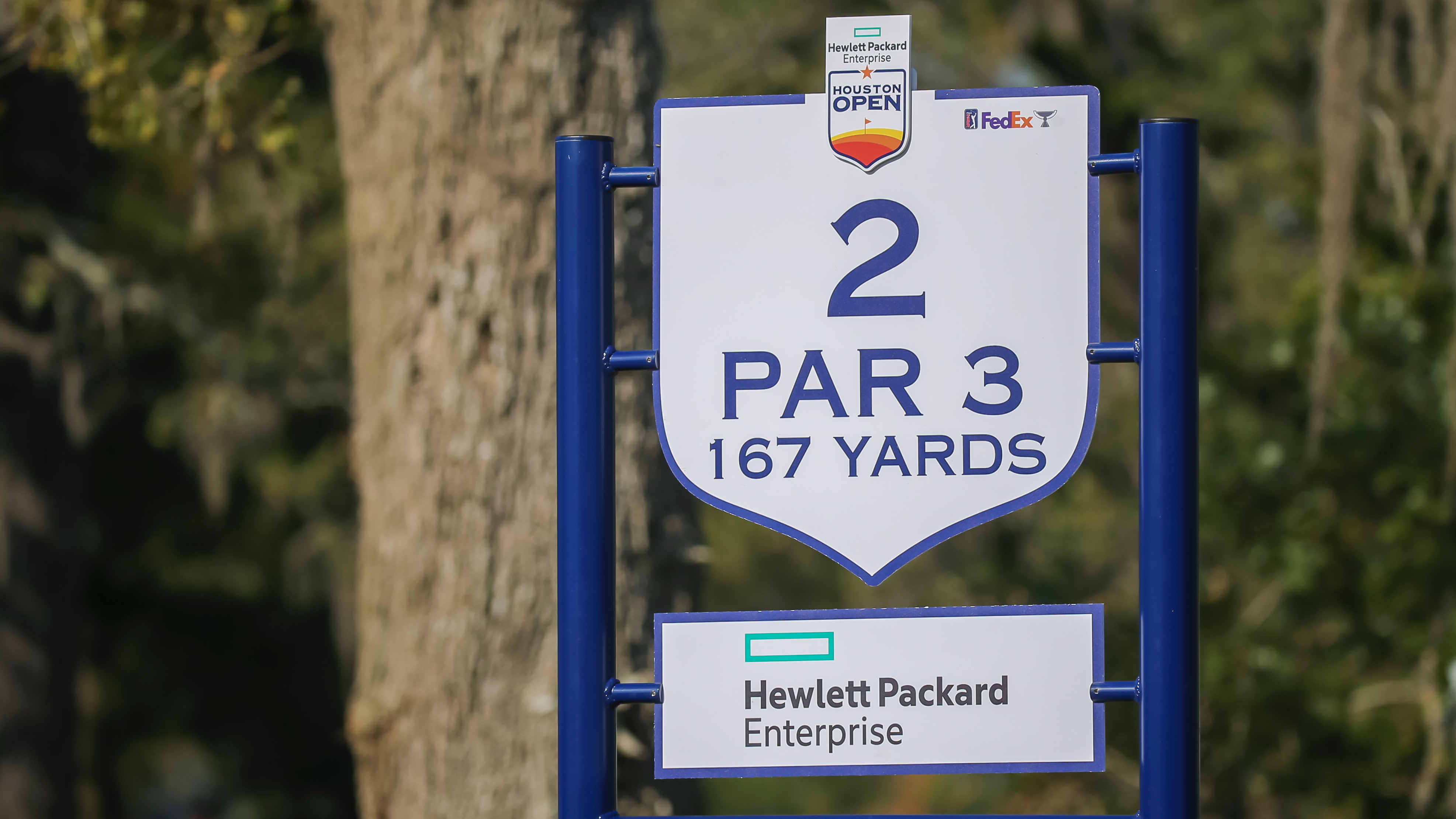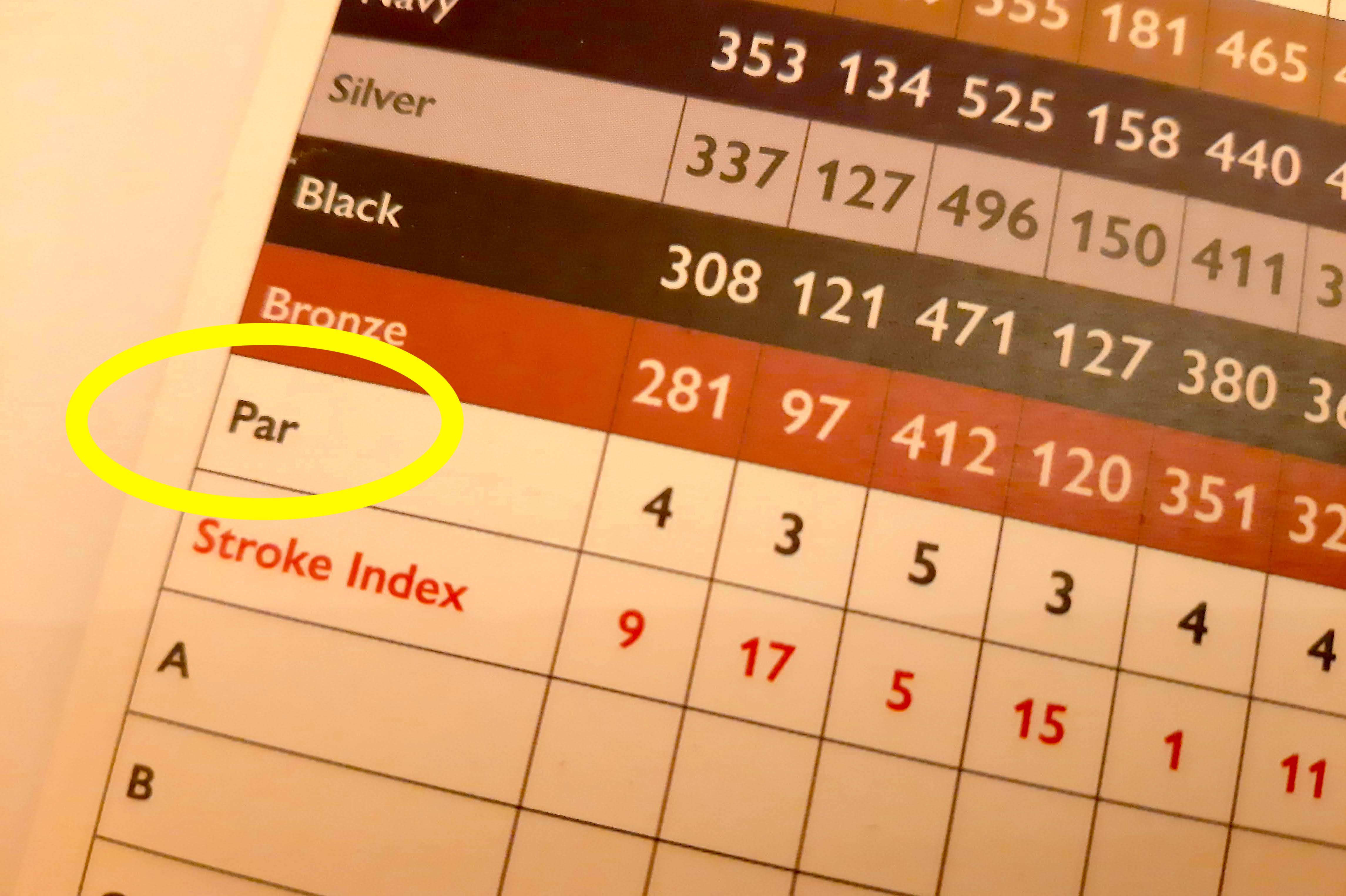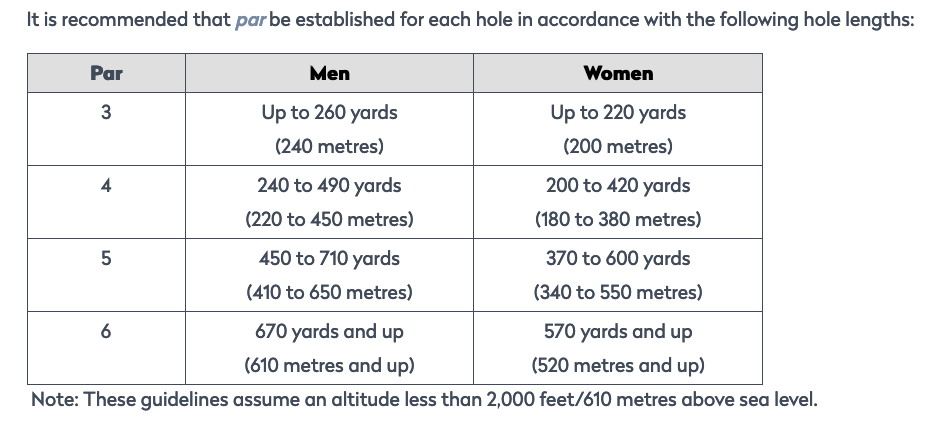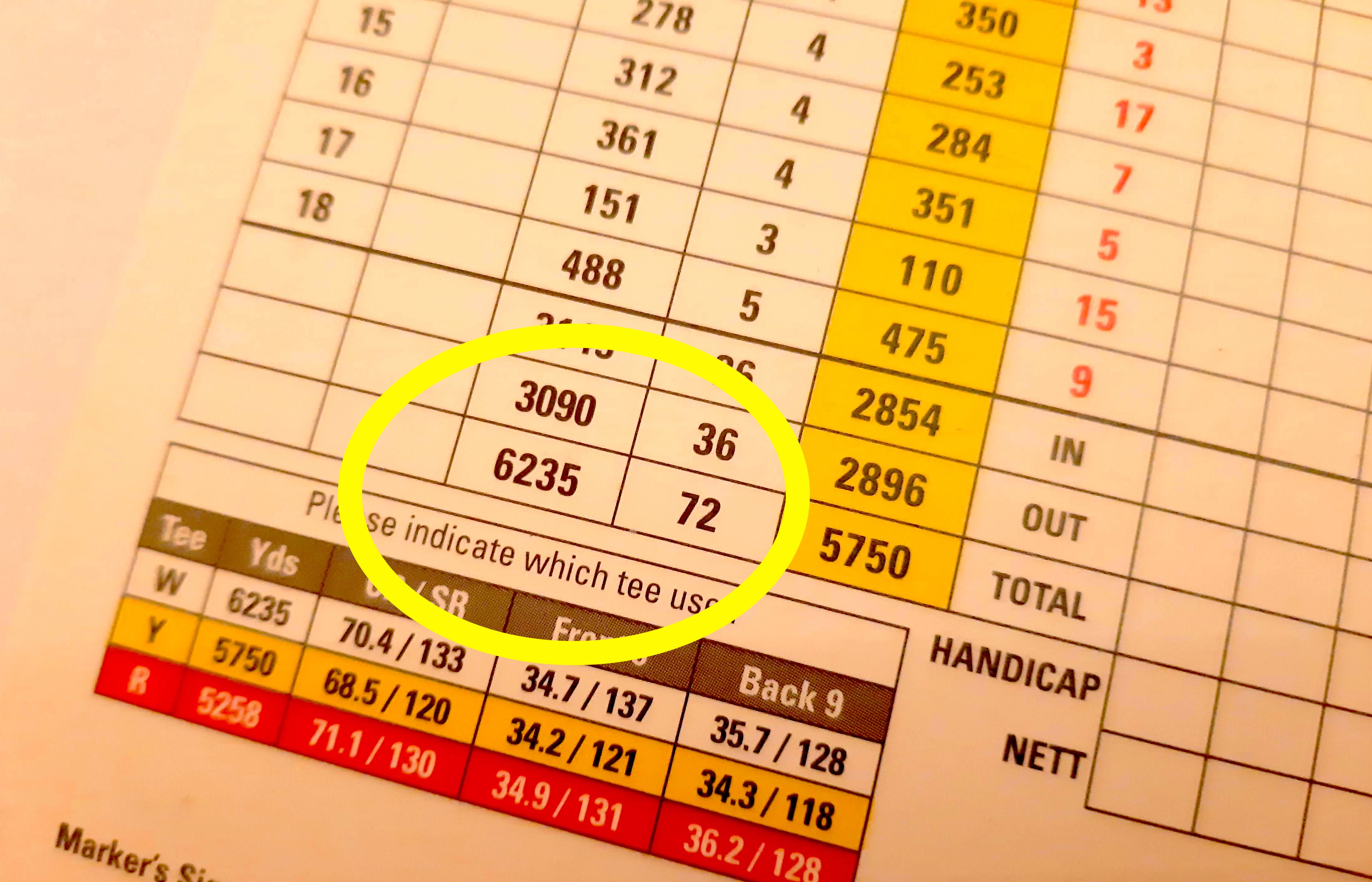What Is Par In Golf?
Even many non-golfers will know the word par, but what exactly does it mean in relation to individual holes and the overall course?


What Is Par In Golf?
We'll get straight to the point here, with a definition of ‘par’ from The R&A’s Rules of Handicapping under the new World Handicap System…
The par of a hole
“The score that a scratch player [a player with a Handicap Index of 0.0] would generally be expected to achieve on a hole under normal course and weather conditions, allowing for two strokes on the putting green.” Golf is, of course, a game that relies on a handicap system to allow players of different abilities to compete against each other, so there is a further definition for ‘net par’: “A score equal to the par of a hole adjusted for any handicap strokes applied on that hole.”

Virtually every hole you play will be a par 3, par 4 or par 5
The par for a given hole is primarily a reflection of its length, but sometimes, any particular difficulties on a hole may come into the equation. The vast majority of golf holes have a par of 3, 4 or 5, but there are also a tiny number of par-6 holes out there, including a few in the UK (e.g., the 16th at Hamptworth Golf Club in Wiltshire) if you want to take on one of golf’s ultimate long-hole challenges!

Holes of this length might be par 5s on some courses
The guidelines as to the recommended pars for the length of a hole have changed a little in recent years as more players now hit the ball further, and the chart below shows the latest recommendations from The R&A’s website. But these are only recommendations and you may well encounter holes under 450 yards for men being afforded par-5 status if they play steeply uphill, for example, or perhaps into the prevailing wind.

Par recommendations based on hole length
If you make a score of one over par on a given hole, that is called a bogey. If you are better than par on a given hole you will have made a birdie (one under par), an eagle (two under par) or even the very rare albatross (three under par).
The par of a course
The par of a golf course is simply the sum of the pars of all 18 individual holes (or 9 holes, or occasionally even a non-standard number – e.g., Shiskine on Arran, which has 12 holes). The majority of 18-hole golf courses will have an overall par of between 68 and 72, though many shorter courses will be less than 68 and a handful of longer courses, or those with an unusually high number of par 5s, may occasionally exceed 72.
Subscribe to the Golf Monthly newsletter to stay up to date with all the latest tour news, equipment news, reviews, head-to-heads and buyer’s guides from our team of experienced experts.

This course has a total yardage of 6,235 yards and an overall par of 72
If there were a classic ‘conventional’ course par and make-up it would be 72, comprising ten par 4s, four par 5s and four par 3. But many, many courses deviate from this both in terms of their overall par and its constituent elements. The Red Course at The Berkshire near Ascot famously boasts six 3s, six 4s and six 5s in its overall par of 72, while Elie in Fife has 16 par 4s, two par 3s and no par 5s in its overall par of 70.
Par and handicaps
Many golfers instinctively want to gauge their handicap against the par of a course, but this is not the figure that the World Handicap System uses. Par has no direct bearing on handicap, which rather is a factor of the course rating and slope rating of a particular course. The reason for this is that the overall par of a course may not be a true reflection of its difficulty.
Most 18-hole courses in the UK would have an overall yardage of between around 5,800 and 6,500 yards. But there are many courses that fall outside these boundaries and it’s quite possible for a course of 5,700 yards to have the same overall par as one of 6,500 yards, perhaps if the shorter course has a high number of short par 4s rather than additional par 3s.
It’s highly likely, though, that the former would be an easier layout on which to play to par, which is why handicaps are not assessed against par. To take an extreme, hypothetical example, a course could comprise 18 par 4s of 300 yards each giving it a total yardage of just 5,400, but a par of 72. This would likely be a much easier course than a par-72, 6,600-yard layout with a typical mix of par 3s, par 4s and par 5s.

Jeremy Ellwood has worked in the golf industry since 1993 and for Golf Monthly since 2002 when he started out as equipment editor. He is now a freelance journalist writing mainly for Golf Monthly. He is an expert on the Rules of Golf having qualified through an R&A course to become a golf referee. He is a senior panelist for Golf Monthly's Top 100 UK & Ireland Course Rankings and has played all of the Top 100 plus 91 of the Next 100, making him well-qualified when it comes to assessing and comparing our premier golf courses. He has now played 1,000 golf courses worldwide in 35 countries, from the humblest of nine-holers in the Scottish Highlands to the very grandest of international golf resorts. He reached the 1,000 mark on his 60th birthday in October 2023 on Vale do Lobo's Ocean course. Put him on a links course anywhere and he will be blissfully content.
Jezz can be contacted via Twitter - @JezzEllwoodGolf
Jeremy is currently playing...
Driver: Ping G425 LST 10.5˚ (draw setting), Mitsubishi Tensei AV Orange 55 S shaft
3 wood: Srixon ZX, EvenFlow Riptide 6.0 S 50g shaft
Hybrid: Ping G425 17˚, Mitsubishi Tensei CK Pro Orange 80 S shaft
Irons 3- to 8-iron: Ping i525, True Temper Dynamic Gold 105 R300 shafts
Irons 9-iron and PW: Honma TWorld TW747Vx, Nippon NS Pro regular shaft
Wedges: Ping Glide 4.0 50˚ and 54˚, 12˚ bounce, True Temper Dynamic Gold 105 R300 shafts
Putter: Kramski HPP 325
Ball: Any premium ball I can find in a charity shop or similar (or out on the course!)